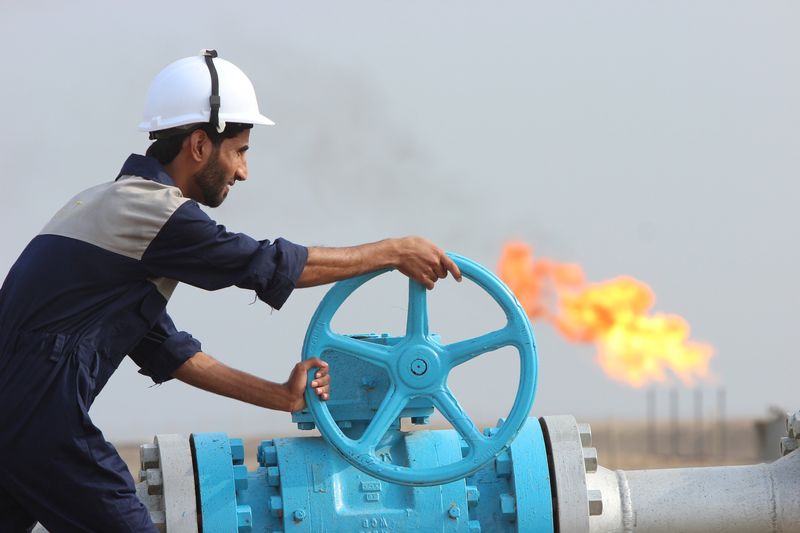Oil Prices: A Tale of Two U.S. Crude Contracts, Both Bad

By Barani Krishnan
Investing.com - Oil is making history for all the wrong reasons.
The expiring spot contract in U.S. West Texas Intermediate crude, May, has tanked 30%, widening its contango, or discount to nearby June to almost the price of the front-month contract itself.
In terms of milestone, May struck a February 1999, or 21-year, low at $11.45 per barrel while June slumped hit an intraday bottom at $21.66. By 11:10 AM (15:10 GMT), the difference between them was around $10 a barrel.
“This is history: the contango on the first spread of WTI (May-June) is almost as big as the flat price of the front month (May WTI),” Olivier Jakob at Zug, Switzerland-based oil risk consultancy PetroMatrix tweeted.
Brent, the London-traded global benchmark for crude, was, meanwhile trading at $26.80 on the front month June contract, down nearly 5% on the day. While June Brent was at a contango of almost $3.50 to July Brent, its differential to WTI — a big trade in oil — was at $14.
“I am worried about the dislocation of the WTI-Brent spread,” Igor Windisch of the IBW Daily Oil Brief said in a note Monday. “The worrying thing is that there is no support line for Brent.”
But the horror isn’t over for U.S. crude itself. May WTI is only expiring Tuesday and has to converge with physical oil in the market, which traders report is fetching around $2 per barrel. That leaves to anyone’s imagination what May’s final price would be. And whatever that it is, it will have an immense impact on June, which becomes the front month from Wednesday.
“The expiring May contract either has to go down to what the physical price is - $2 - or the physical price has to come up a bit - say to $5 - and May goes down further for both to converge,” said a trader who handles physical barrels in U.S. crude. “I can tell you it won’t be pretty.”
Notwithstanding where it expires, the next major lows that await May WTI are $10.35 a barrel, set in December 1998, and $9.75 a barrel, set in April 1986.
Amid the Covid-19 pandemic that’s destroying demand for oil faster than producers can cut, how much storage is left for crude and whether it’ll run out has been a matter of great debate.
According to known data, storage at the Cushing, Okla. hub for WTI deliveries reached 71% of working capacity as of April 10 — up 15% from two weeks earlier. At the rate Cushing is building, at an average of 16 million barrels weekly over the past three weeks, analysts say the hub could hit capacity by mid-May, or the first few weeks of June at the latest.
Oil storage on sea is growing too. Global crude tankers are estimated to hold a record high of 160 million barrels, double from just two weeks ago.
Rystad Energy in Oslo, Norway, has estimated previously that U.S. storage capacity by the end of April could drop to as little as 200 million barrels on paper, although in practice, available crude capacity might be closer to 150 million barrels.
“As storage fills up, countries are being forced to shut-in production on a large scale to counteract a theoretical oversupply of 21 million bpd in 2Q20,” Teodora Cowie, senior analyst at Rystad, wrote in a note Monday.
But Orbital Insight, a satellite data firm in Palo Alto, Calif., says as of April 17, its real-time tracking technology showed that oil tanks could still accommodate more than 2 billion barrels worldwide.
Orbital says it tracks almost all of the world's 27,000 floating roof tanks and automatically estimates total crude volumes on a daily basis using high-revisit optical satellite imagery and focused Synthetic Aperture Radar signals beamed up from key terminals.
Mixed messaging on the impact of the pandemic on America’s health was also having varying influence on investor behavior across markets.
Wall Street’s Dow dipped at Monday’s open after last week’s rebound which was based on optimism that the United States was progressing in its fight against the coronavirus.
New York Governor Andrew Cuomo said Sunday he continued to see a decline in hospitalizations and daily deaths. But Cuomo also noted the need to significantly expand testing for Covid-19 to avoid igniting a new wave of infections, and called on the federal government to help New York’s labs acquire chemical reagents needed to perform those tests before the state’s economy can be reopened.
It was a similar story in neighboring New Jersey, where the virus’ curve was showing signs of flattening in some places and ramping up in others, according to Governor Phil Murphy.
Amid these, President Donald Trump praised protests in states run by his Democrat rivals, saying the governors there “have gone too far” in practising social-distancing requirements — the same ones he approved — for the pandemic. That muddled the takeaway message for investors on how well the federal administration was working with the states in getting the country back to work.
Comments
Post a Comment